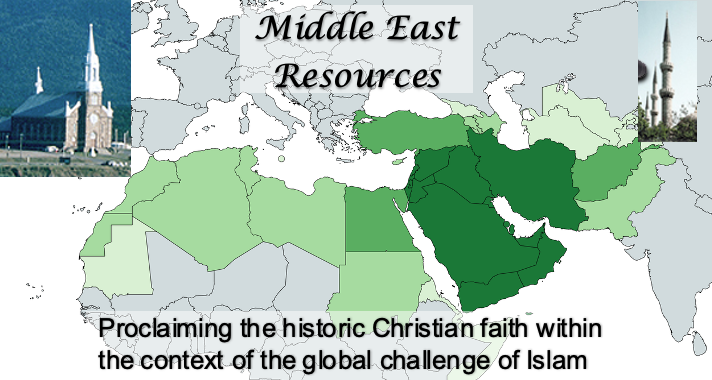A BRIEF INTRODUCTION TO ISLAM
The Muslim Prophet Muhammad was born in 570, at Mecca, Arabia. At the age of 25, he married Khadija who was 40. They had one daughter Fatima Khadija died in 619. According to Islamic tradition, Muhammad’s prophetic career began at the age of 40, when the angel Gabriel appeared to him. He was greatly perturbed after this first revelation but was reassured by his wife and her cousin. Muhammad continued to receive revelations. When he began to proclaim his message in Mecca, he was met with strong opposition.
With a few followers, he left for Medina in 622, a date that marks the beginning of the Islamic Lunar Calendar 1 A.H. (Anno Hejira) i.e., the year of the Migration. This move marked the transformation of Muhammad into a Leader of the Muslim Community, the Umma. Those who came with him from Mecca are called Al-Muhajirun (Immigrants), the people who welcomed him at Medina are known as Al-Ansar (Partisans).
Muhammad began a series of raids on the Caravans of the Meccan merchants that were en route to Palestine and Syria. By 630, the Resistance among the Meccans collapsed, he and his supporters from Medina entered Mecca triumphantly, and destroyed the idols at the Kaaba (site of the Black Stone). The triumphant Prophet-Statesman returned to Medina, where he died of a high fever on Monday, the 8th of June 632.
After the death of Khadija, Muhammad married several wives, one named Aisha, a young girl whose father, Abu Bakr, was a close friend. Upon Muhammad’s death, leaders of the Muslim community in Medina chose a successor (Khalifa). The first Caliph was Abu Bakr, the father of Aisha. He died in 634, and was followed by Omar, Uthman, and Ali. These four men are known as the “Rightly Guided Caliphs.”
Omar assumed the Caliphate in 634 and launched the Conquests (Futuhat), eastward into Syria, Mesopotamia, and Persia, and westward into Egypt and beyond. He was assassinated in 644 by a Persian slave. Uthman became the third Caliph in 644 but met with opposition, as there was no consensus about his choice. He was assassinated in 656. He was followed by Ali, a cousin and son-in-law of Muhammad.
Muawiya, the military governor of Syria who was related to Uthman, claimed that Ali was involved in the murder of the new Caliph. He opposed Ali’s assumption of the Caliphate. Ali, with a considerable army, fought Muawiya, and while gaining the upper hand in the battle, a disagreement arose in his camp that led to his assassination. That opened the door for Muawiya (a member of the Umayyad clan) to become the Caliph.
Under the Umayyads, the Caliphate became a dynasty. The capital was moved from Medina to Damascus, Syria. It lasted until 750. During its rule, the Islamic conquests reached Spain, and were stopped by Charles Martel at the Battle of Tours, near Poitiers, France, in 732 AD.
The Umayyads faced several enemies, the followers of Ali, known as the Shi’ites, and other Muslim factions. Abu’l Abbas Al-Saffah, a descendent of Muhammed’s uncle, led a large army that defeated the Umayyads in 750. The Abbasids built their capital in Baghdad, Iraq. They were followed by the Ottoman Turks in 1453, after defeating the Byzantines, and renamed their capital Constantinople, Istanbul.
The Ottoman Caliphate was abolished in 1924 by Kemal Ataturk, founder of the Turkish Republic. He instituted a secular regime, and initiated a Latinized Turkish Alphabet, thus helping the Turkish masses to become literate. Ataturk’s reforms lasted for several decades after his passing in 1938 but were gradually overturned by Recep Tayyip Erdogan early in 2000.
According to a recent article from the AFP news service:
“President Erdogan will mark Turkey's centenary Sunday [the 29th of October 2023] by honouring the republic's revered founder, while chipping away at the foundation.
“Erdogan and Mustafa Kemal Ataturk have become the seminal figures of modern Turkey, their contrasting styles and visions defining the shape of society and the country's place in the world.
“Dubbed "reis" ("chief") by supporters, Erdogan is now Turkey's longest-serving leader, overseeing a massive modernisation drive that has sustained his popularity in poorer and more religiously conservative provinces since 2003.
“Meaning the "father of all Turks", the surname Ataturk was bestowed on Mustafa Kemal by Turkey's parliament after the field marshal drove out foreign armies and built a new, staunchly secular republic from the Ottoman Empire's ruins.
“Now, Erdogan is walking a fine line between paying respects to the man who created the country, and building his own legacy -- one that critics fear is pulling Turkey back into its Ottoman past.”
In Islam, the Sunni-Shi’ite divide began with the assassination of Ali in 661; it solidified in 680 when his son Hussein was assassinated with his entourage, at Karbala, Iraq. Most Muslims adhere to the Sunni tradition, while around 10% are Shi’ites, live in Persia (Iran), Iraq, and Lebanon. There are no Shi’ite communities in Egypt and the rest of North Africa.
In Sunni Islam, there developed four official schools for the Interpretation of the Shari’a Law. While in Shi’ite Islam, the Interpretation of the Law is handled by religious scholars known as Ayatollahs. In Sunni Islam, an Imam is any authorized leader of worship at the Mosque. While in Shi’ite Islam, an Imam is usually a descendent of Ali through Hussein, who yields absolute power in religious and political matters.
For sources about early Islamic history:
 Middle East Resources
Middle East Resources
